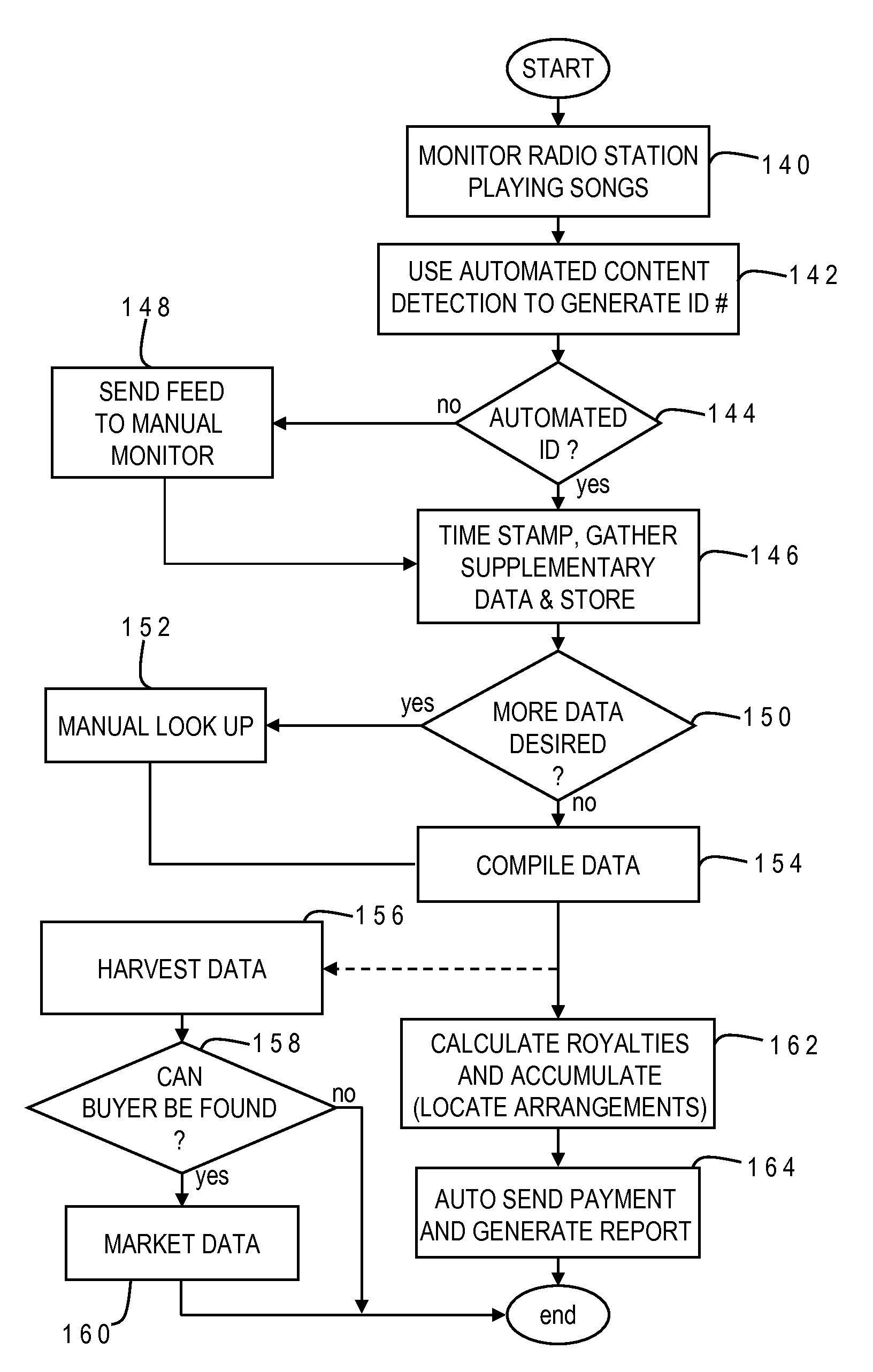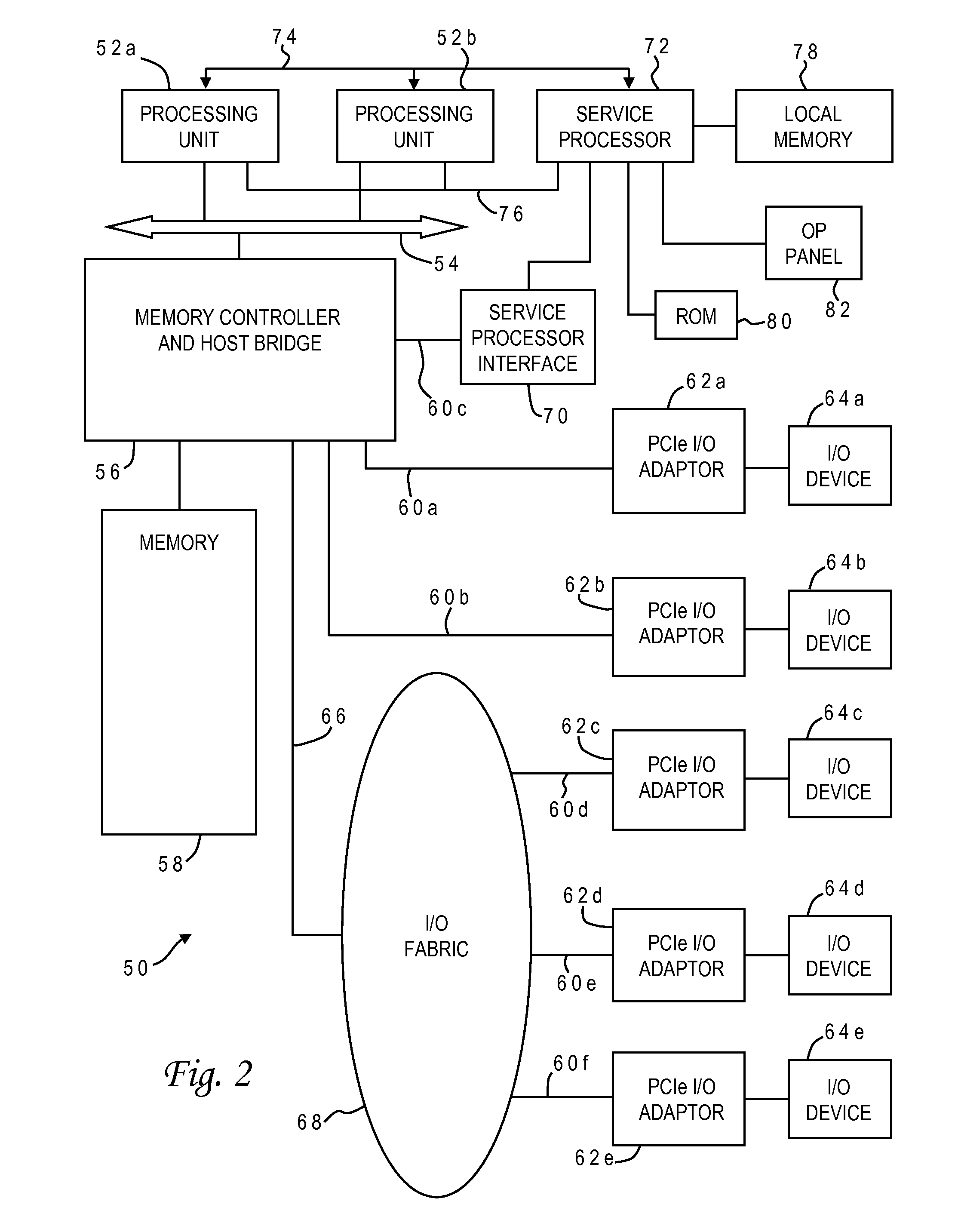Automated media and content reporting system for broadcast media
a broadcast media and content reporting technology, applied in the field of royalty payment calculations and distribution arrangements, can solve the problems of complicated music industry, increased complexity of compensation for composers and artists for their musical compositions and performances, and often poor estimates of the type and amount of actual works performed, so as to reduce the amount due, reduce the number of transactions, and reduce the effect of copyright royalty calculation and payment system efficiency
- Summary
- Abstract
- Description
- Claims
- Application Information
AI Technical Summary
Benefits of technology
Problems solved by technology
Method used
Image
Examples
Embodiment Construction
)
[0038]After understanding the background section above, it can be appreciated that managing copyright royalties is a complex convoluted process for copyright owners, rights holders and users of copyrighted materials. For one, the ownership and management of exploited music copyrights through multiple licenses and multiple entities includes calculations and collection strategies for the resulting type of use and royalty and fee arrangement. Types of use can include, copying the composition onto a tangible media which results in mechanical royalties, performing the work can include song writer performance royalties and allowing works to be used in part can result in synchronization fees and different entities may own the rights to each of these royalties. Thus, rights are often very fragmented and administrating the use of a copyright throughout the United States is a complex and convoluted process. The business of music publishing, performance and promotion is littered with obscure,...
PUM
 Login to View More
Login to View More Abstract
Description
Claims
Application Information
 Login to View More
Login to View More - R&D
- Intellectual Property
- Life Sciences
- Materials
- Tech Scout
- Unparalleled Data Quality
- Higher Quality Content
- 60% Fewer Hallucinations
Browse by: Latest US Patents, China's latest patents, Technical Efficacy Thesaurus, Application Domain, Technology Topic, Popular Technical Reports.
© 2025 PatSnap. All rights reserved.Legal|Privacy policy|Modern Slavery Act Transparency Statement|Sitemap|About US| Contact US: help@patsnap.com



